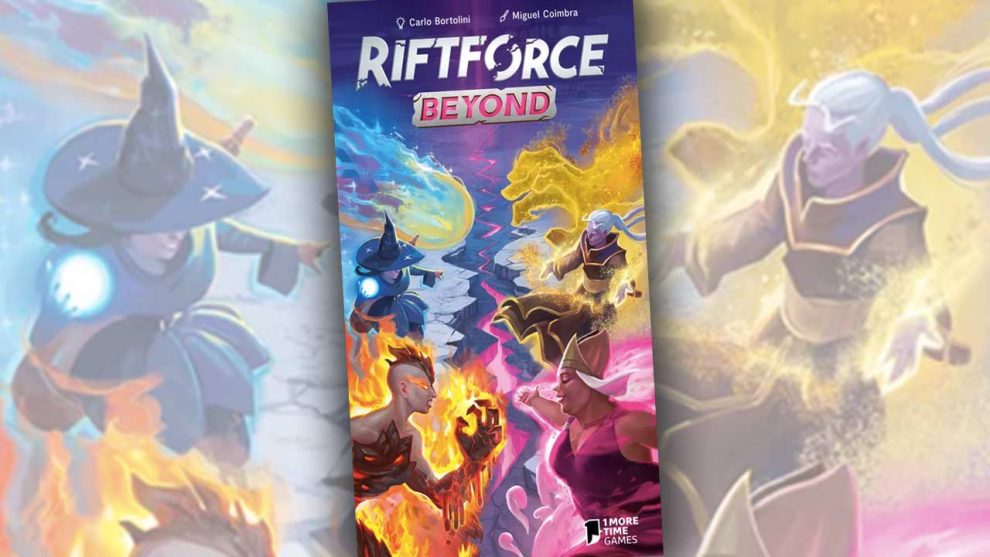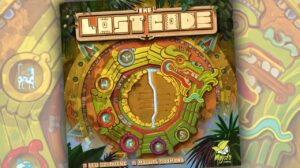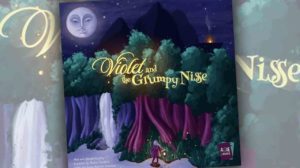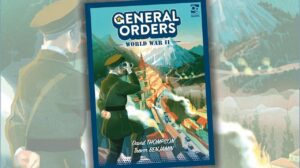Disclosure: Meeple Mountain received a free copy of this product in exchange for an honest, unbiased review. This review is not intended to be an endorsement.
I’ve known Riftforce: Beyond was coming for about as long as I’ve known Riftforce was a game. Capstone Games representatives were already talking about it at PAX Unplugged last December. Nothing like getting your hands on a brand-new game for the first time and immediately being told there’s an expansion coming. I’m not sure if I say that witheringly or not. It’s probably withering.
Riftforce is a two-player card game. Players take turns either putting down sets of Elemental cards to five locations or activating cards they’ve already played. Each Elemental’s power corresponds to one of the game’s ten Summoners. These abilities involve some combination of dealing or healing damage and moving either the Elemental itself or other cards. Figuring out how the powers interact with one another, and with the powers your opponent has at their disposal, is the heart of the game.
My ten or so plays left me with warm if dispassionate feelings. I enjoyed Riftforce and would have happily played it if anyone asked, but I wasn’t likely to suggest it before other two-player games. Once Riftforce: Beyond came out, I’d kind of forgotten about the game. I didn’t get my review copy of the expansion to the table for an uncharacteristically long period of time.
Keep all that in mind as I tell you that Riftforce: Beyond is one of the two or three best expansions I’ve ever laid my hands on.
A Quick Gameplay Explanation
My original Riftforce review is rather light on details, so let me briefly explain how the game is played. You and your opponent take turns drafting a total of four Summoners. Their Elementals, cards with numbers between 5 and 7, are then shuffled together to form your deck. On your turn, you have three options:
- You can play up to three cards, which must all be the same Elemental type or the same number, to either different adjacent locations or all to one location.
- You can activate the abilities of up to three of your cards by discarding either an Elemental of the same type—e.g. discarding a Light Elemental of any value can activate up to three other Light Elementals of any value—or the same value. A 6 can activate three 6s of any denomination. These abilities do damage to your opponent and may have other effects as well.
- You can check (don’t worry about it) and draw your hand back up to seven cards.
The goal of the game is to be the first to twelve points, the titular Riftforce, which are mostly earned by destroying your opponent’s Elementals. Much of the fun for newer players comes from figuring out what synergies exist between your Summoners, and executing them. As you gain more experience, you also start exploring how best to diffuse your opponent’s strengths. For such a small box, there’s a surprisingly high skill ceiling.
More, More, More
Beyond introduces eight more factions, a cooperative mode that allows for 3 or 4 players, and the obligatory solo mode. What the base game did right, and what I worried would be compromised by an expansion, was keeping things simple and tight. The ten original Riftforce factions each had a (subtly and yet also simultaneously radically) different ability. What the game did exceptionally well was creating a set of abilities that were straightforward in how they functioned, but subtle in their impact. Not only that, they were impeccably balanced.
When I heard that this expansion nearly doubled the number of Summoners, I assumed that the individual abilities would start to get either convoluted or, as the kids say, OP. I was surprised to open the box and see abilities entirely in line with what had come before. I was also somehow a little disappointed. “That’s it?,” I thought to myself. “These almost seem redundant.”
When I sat down to play, though, the difference was immediately apparent. The decisions felt richer and more meaningful, the placement of cards seemed more important. Bartolini figured out exactly what was missing around the edges of the original set of Summoners. The depth has increased without sacrificing approachability. The new abilities may not have looked like much on paper, but then again, neither did any of the originals.
It Takes Two Three-to-Four
Riftforce: Beyond includes a module for team play, allowing a third or fourth player to join. The changes to the board are minimal and easy to implement. All you’ll do is swap out two of the five middle cards for a set of three in a different color, along with a turn tracker. There are minimal rules changes around setup and the Check and Draw action. Other than that, you’re off to the races.
Teammates have free range of their side of the board. You can play cards, following the normal rules, anywhere on your side. The difference in color for those three new cards is entirely to serve as a reminder for the changes to Check and Draw. Teammates also have free range over activating all the Elementals on their side of the board. You can activate a mix of your own and your teammate’s Elementals by discarding a card for its number.
The team mode is a hoot. You and your teammate are allowed to talk about general strategy, but you’re not meant to give one another specific instructions. You never see one another’s cards, and you’re not to discuss them. When you’re on the same page about how to get everything working, it’s dynamite. It is incredibly satisfying to put down a set of cards to specifically set up a combo and then have your teammate see it. On the other hand, when they don’t see it, it can be very distressing.
Even if I still prefer Riftforce at two, I love the added social elements of playing with a teammate. The ability to add more players also means this game will be getting to the table more.
How Solo Can You Go?
I was skeptical enough about Riftforce: Beyond including a solo mode that I audibly guffawed when I found out. Riftforce is mechanically pretty straightforward, but the various factions work in such distinct ways, and the nuances of their interactions are such a large part of the game, that I couldn’t see it working without involving some sort of absurd decision tree more befitting a GMT behemoth than a light, 20-minute two-player game. Even without the expansion, there are 5,040 different possible faction combinations. With the expansion, that number approaches a stonking 74,000. How do you AI that?
The answer, as it should happen, is to ignore the factions entirely. While your cards and summoner abilities work exactly as normal, the bot only values cards for their numbers. Enemy actions are determined by a small deck of cards you set up before play begins. Each action card adds a single Elemental card to one location before triggering up to three attacks. Each number, 5, 6, and 7, has a specific effect. If two 6’s and a 5 attack, you get to choose which 6’s and which 5, within certain guidelines. They then do what they’re programmed to do.
Everything I just described is pretty standard for a solo mode. I left out the wrinkle: you know what the bot’s going to do on its next turn when your turn starts. You know what numbers will be attacking, and you know where your opponent will be adding a card. This turns the aggressive tete-a-tete into a puzzle, and a wonderful one at that. There will be some bumps, likely. You have to learn how to play against the bot, because it isn’t the same as the real game.
What I find truly remarkable is that the bot teaches you to play Riftforce better. If you don’t use your four Summoner powers well together, you will lose. If you are not mindful about where and how you place your Elementals, you will lose. If you don’t keep in mind what the bot is about to do, you will lose, and you will lose quickly. Somehow, without recreating the specific conditions of playing against any one particular set of factions, the Riftforce: Beyond solo mode creates the headspace you have to be in to play against any of them.
Quis Custodiet Ipsos Expansiones?
The best expansions, broadly speaking, either emphasize previously hidden strengths of the design or address weaknesses. Most do neither, hurting their base games by overcomplicating, distracting, diluting, or otherwise muddying. I don’t know why we do it, over and over, as if this time a West Kingdom expansion is going to do anything other than increase explanation time.
Riftforce: Beyond does everything right. You could tuck the new factions in with the base cards without changing the manual and precious few people would notice, because they add absolutely no extra rules overhead. There are no weird extra mechanisms. All they add is depth and richness. It’s seamless. Riftforce: Beyond feels like it has been there the whole time.
I don’t normally buy into “You need the expansion.” I can count on one hand, possibly one finger, the number of expansions I consider essential. Now I need two. If you buy Riftforce, you should absolutely get Riftforce: Beyond to go with it. Don’t even wait. Toss it right in the cart. At full MSRP, the two boxes combined will set you back $50, but there’s a full-sized board game’s worth of content in these two boxes. I can’t wait to get it to the table again. Riftforce: Beyond not only plays to the base game’s strengths, it elevates them. Riftforce is better because Riftforce: Beyond exists. The game is more fun, more varied, more thought provoking, and comes with its own training dojo. What more could you ask?













Add Comment